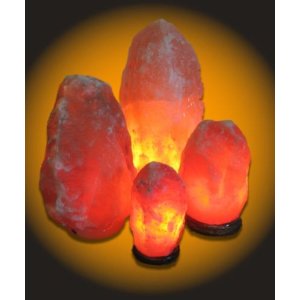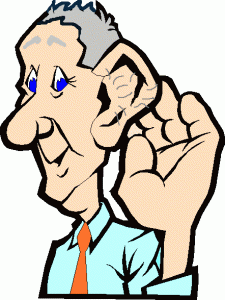


 What has ended up being one of the best changes ever made to my massage space began almost as a tussle at the last company Christmas party. Instead of a simple gift exchange, we played one of those games where everyone brings a mystery gift priced under $20. Then, everyone pulls a number out of a hat between 1 and whatever number of people are participating. The person with “1” on her slip gets to choose a gift first. Then number “2” can either choose a gift or “steal” the already opened gift. And so it goes on until all the gifts are open and the first person, who has had no chance to steal a gift yet, gets to do so.
What has ended up being one of the best changes ever made to my massage space began almost as a tussle at the last company Christmas party. Instead of a simple gift exchange, we played one of those games where everyone brings a mystery gift priced under $20. Then, everyone pulls a number out of a hat between 1 and whatever number of people are participating. The person with “1” on her slip gets to choose a gift first. Then number “2” can either choose a gift or “steal” the already opened gift. And so it goes on until all the gifts are open and the first person, who has had no chance to steal a gift yet, gets to do so.
To make a long story short, the first gift opened was a salt lamp. And given that I have always admired salt lamps, I promptly stole it when it was my turn … only to have it stolen back from me at the very end, dang it! The winning therapist brought it to her room at work, where it was so tempting and lovely, that in a month, I went out and bought my own. Now we ALL have them, and we love them.
The long, long history of salt as a purifier, both on the skin and in the air, both physically and spiritually, is well-documented. And there is a wealth of information out there on the Internet that describes the benefits of salt lamps in particular. Personally, I have no experience yet of salt lamps having a measurable effect on allergies, asthma, or any other air/breathing condition. But I will say that I have noticed a positive effect on my mood since I started using it, that is as profound as certain types of aromatherapy. I also find my salt lamp extremely comforting in emotional ways. Though it glows, it does not give me the feeling of winter outside, as a fake fire might. Instead, it’s like a happy little sun. (This distinction is important to me when I’m starting to feel that in Seattle it’s always winter, and never Christmas 😉 With just the lamp on, there is plenty of light for me to move around without tripping over objects, and yet not enought light to disturb the clients’ relaxation. In fact, many of my clients have commented on how much they like my salt lamp, though they add that they sometimes “don’t know why.”
If you decide to try out a salt lamp, I’d recommend going down to Central Market, where you can get one in a good size for a typical massage space for $20. Or, you can pick one up from Amazon for about $15. I’d also recommend saving whatever information pamphlets come with it so that you can show them to interested clients. Since there are a zillion types of salt lamps out there, from the simple and cheap to the elaborate and expensive, this allows you to give clients basic information without having to become a salt lighting expert.
 In the last few weeks, I’ve begun to swear to myself never again to hire a therapist who works seven days a week–especially at three to four different jobs. No matter how much she assures me she can handle it/has handled it/wants to handle it. Not even if her practical makes me feel like whipped mousse . . . the first time around.
In the last few weeks, I’ve begun to swear to myself never again to hire a therapist who works seven days a week–especially at three to four different jobs. No matter how much she assures me she can handle it/has handled it/wants to handle it. Not even if her practical makes me feel like whipped mousse . . . the first time around.
Even worse, short, infrequent shifts with little energetic involvement doesn’t leave you a lot for being a good team member. You don’t always fold that load of laundry or look around for some shared task that needs to be done. You’re not really involved here, you just work here . . . sometimes. And you might make a few more dollars, but seriously . . . are a few more hours of massage going to make you rich? Not unless you’re personal massage staff for a major celebrity or oil tycoon.
 At my place of business, we’ve instituted the practice of writing thank-you notes to new clients. A brief thank-you note really adds a special touch and shows clients that we are genuine both in wanting to help them and in being grateful for their business. Sounds like a fairly simple task, right? Apparently not for everyone
At my place of business, we’ve instituted the practice of writing thank-you notes to new clients. A brief thank-you note really adds a special touch and shows clients that we are genuine both in wanting to help them and in being grateful for their business. Sounds like a fairly simple task, right? Apparently not for everyone  Given that my upbringing and my Southern mother and grandmother demanded that I know how to write thank-you notes, I can do them in my sleep. So after my boss asked me to address the situation, I sat down and thought for a few minutes and came up with the following tips and examples:
Given that my upbringing and my Southern mother and grandmother demanded that I know how to write thank-you notes, I can do them in my sleep. So after my boss asked me to address the situation, I sat down and thought for a few minutes and came up with the following tips and examples:
Here are some examples:
***************************************************************************
Just a note to let you know how much I enjoyed having you as client today at Blank! I hope your neck will feel much better in the coming weeks, and we look forward to seeing you again in the future.
Best,
Lynna
Dear Inez,
Thank you so much for choosing Blank for your first massage ever! I hope you found it wonderfully relaxing and will be visiting us again in the future.
Dear Nancy,
It was wonderful to have you as a client today at Blank. I was happy to be able to help you with your neck pain, and I hope that now you’re feeling better, you’ll really be able to enjoy your visit with your daughter.
Many thanks,
Lynna
Dear Bob,
Happy Holidays,
Lynna
***************************************************************************

 When I have a client in pain, either from emotional or physical issues, I ask a lot about the pain, but I also ask other questions such as “Are you sleeping?” Often the answer is “no” or “not well” or “sometimes.” And since sleep time is the body’s healing time, not sleeping or not sleeping well can be a big problem in getting rid of pain.
When I have a client in pain, either from emotional or physical issues, I ask a lot about the pain, but I also ask other questions such as “Are you sleeping?” Often the answer is “no” or “not well” or “sometimes.” And since sleep time is the body’s healing time, not sleeping or not sleeping well can be a big problem in getting rid of pain.
My nutritionist, Sam Zeiler, often gives free weekly seminars to clients on various topics, and last week we talked about sleep. According to Sam–and apparently a lot of studies as well–good sleep requires darkness. You’re probably thinking, “Well, duh . . . “
Actually, I was thinking that myself, until it hit me: my room is not dark. My room is deeply dim. But with all that light seeping in through the shades from the streetlights and security lights, my room is not actually dark. Not BIG dark. Not dark like when you’re driving across nowhere New Mexico at midnight, and there are about a trillion stars you never knew existed, and the edge of the road ends at pitch-freaking black. Now THAT is dark.
The second most important thing for good sleep is quiet. No TVS, no computers, no radio shows. Again, duh, right? I don’t have any of those things. I do, on the other hand, have road noise, cars beeping, and the occasional person talking outside or dog whining in the living room. So if you can’t get true quiet, there are some great machines for “white noise.”
Now that I’m having this realization about true dark and true quiet, I’m looking forward to building my bedroom into a cave. And I’m hoping I sleep better so that I can recommend measures to my non-sleeping clients that might actually work.
My business has been doing a lot of interviewing lately, so I’ve been doing a lot of practical massages. Or having them done to me, as the case may be. Which is not, perhaps, as delightful as it sounds. In a practical massage, I can’t just zone out: I have to listen, feel, weigh, measure, and think about how this person and her massage might add to our team.
In addition, since I’m most interested in adding another “true” deep tissue person to the team, I’ve been asking specifically for deep tissue massage, and not always getting it. Now, telling someone she’s not what you’re looking for in a delicate and sensitive way is sometimes a challenge, particularly since I have a lot of empathy for often anxious, interviewing therapists. And even if I asked for deep tissue and still got a massage that felt like I was being skated on by dragonflies, I’m still sensitive to the therapist’s feelings. Up to a point . . .
The point in one massage came for me when in “letting her down easy,” a therapist got very upset, stating that she thought she already had the job. This honestly concerned me, and I asked her what we had said to lead her to believe this, so that we would have no such misunderstandings in the future. She said it was because we had said in the first part of the interview that we needed someone immediately. I replied that we did indeed need “someone” immediately, but we had to do practicals before we could determine which “someone” was right for us. She then made a veiled suggestion that some massage businesses (perhaps even us?) used practicals as a way of “getting free massages.” As you might guess, that was when my empathy well ran dry. I remained polite, but stated that we were much too busy trying to run and staff a business to plot ways to get free massage.
In my opinion, all but accusing a potential employer of trying to get a “free massage” is not a good way to endear yourself to said employer. But I can’t stop wondering: Does that really happen? Are there some businesses out there using practicals as a means of getting free massage. Surely not . . . right? If anyone has an opinion on this, feel free to weigh in.
 Miscommunication. It happens sometimes. A client recently told me about how her poor little toy poodle accidentally feel in the icy cold backyard swimming pool the other day. Rushing him into the house wrapped in a towel, she shrieked up the stairs to her husband, “Hey!! Dottie fell in the pool!” To which he called back, “Okay, bring me back a coupla bear claws will ya?” More shrieking followed on her part, to which he replied, having finally heard her and run down the stairs, “I thought you said you were going to the store!” As awful as all this must have been to poor shivering Dottie, you have to admit the humor in it . . . frankly, I laughed so hard, I almost swallowed my tongue.
Miscommunication. It happens sometimes. A client recently told me about how her poor little toy poodle accidentally feel in the icy cold backyard swimming pool the other day. Rushing him into the house wrapped in a towel, she shrieked up the stairs to her husband, “Hey!! Dottie fell in the pool!” To which he called back, “Okay, bring me back a coupla bear claws will ya?” More shrieking followed on her part, to which he replied, having finally heard her and run down the stairs, “I thought you said you were going to the store!” As awful as all this must have been to poor shivering Dottie, you have to admit the humor in it . . . frankly, I laughed so hard, I almost swallowed my tongue.
Miscommunication in massage can be awful too, and much less laughable. Or perhaps I should say “lack of communication” instead of “miscommunication.” Someone asked me once what I thought was the most important factor in building clientele and retaining clientele outside of giving a damn good massage. “Listening,” I replied. “Listening to the client, and what she says to you about her pain, about her life, about her stress. Listening to the eyes in your head and to the eyes in your palms and fingertips. Listening to your gut. And then when you’re done listening, there’s the caring. Because if you listen and they sense that, and you care, and they sense that, then they will come back again and again. And their pain will improve, their lives will improve, in both direct and indirect ways. And you as the therapist will be like one of the little drops of water that over a millenia carve a canyon.
I truly believe that to be successful, true to your life’s purpose, you must communicate and connect with clients. There are a zillion massage therapist in Washington state. Why should any given client “land” with you? Communicate, connect, and find out. I’ve been lucky enough to work with many excellent therapists each as different as one snowflake to another. But the ones who had large, loyal clienteles were communicating, connecting, listening, caring. Not all in the same ways, mind you. Loud and bright, quiet and subdued, strong and light handed, etc., etc. All different. All wonderful with human beings. All diggging out a canyon of healing with drops of water in an often parched world.
For a caring, involved therapist, communicating, connnecting, listening, and caring are generally not that hard. But everyone has bad days, tired days. Everyone occassionally ends up with that client that makes her think, “Good lord, why is this person being such an ass?” When I find myself in such places, I pray, “Goddess, take my hands and work through me, because you know things I don’t and I am emptied out” or “Universe, this guy is really being mean, but I love him if only as a child of God, and so please let me give him the best massage I can.” In this way, there is still a thread of communication and connection. The recipients of “tired” massages are still thrilled, and even “mean people” are feeling much more benelovent at the end of the session.
There is a last part to caring that I don’t want to leave out here: ask the client to come back. And don’t just ask her to come back, tell her honestly how often YOU think it would be good for her to come back based on the results of all your listening. It’s the same as having a potential friend over for a visit. If you say, “We should do this again sometime” and mean it, it’ll give that person a warm glow that, “Okay, I need to go to bed now; drive safe” just won’t.
Communicate, connect, listen, care. Do these things and your clientele will flow to and keep on flowing to you. And you will not only make a living, you will make a difference.
 Are massage therapists flaky as a demographic? Someone asked me that question recently: another therapist, actually. We were shaking our heads over tales of therapists not showing up for shifts; therapists throwing fits over one client too many, or one client too few, or one client too pregnant; therapists simply disappearing into the sunset, destination unknown.
Are massage therapists flaky as a demographic? Someone asked me that question recently: another therapist, actually. We were shaking our heads over tales of therapists not showing up for shifts; therapists throwing fits over one client too many, or one client too few, or one client too pregnant; therapists simply disappearing into the sunset, destination unknown.
Personally, though extremely sensitive and empathic, I’m almost as un-flaky as they come, and so probably unqualifed to answer this question. I’ve almost never been late, and it generally takes an act of God to even get me near being late. I’ve never not showed up for a shift, never disappeared on an employer. That would unprofessional, and in my up-bringing, simply unthinkable. I would be mortified to let my clients down, my employer down, my teammates down. Even thinking of being the cause of that kind of panic, disappointment, and havoc gives me guilty shivers. And I know many therapists just like me in this way.
On the other hand, there’s no denying there’s more than a handful of therapists out there who are flakier than homemade pie crust. And I can’t deny that whenever we hire a new person at my place of business, I send up a silent prayer: “Oh please God, let her be dependable and sane. Oh please, oh please.” I don’t want someone who hires on and then gives notice in two weeks to go to Bali. Or disappears and ends up in Bali. But you can only plan ahead so far and so well. Working both in the corporate world and in the academic world showed me that a person can give a wonderful interview and be a lousy employee or vice versa.
Still . . . lousy or not, corporate and academic employees rarely no-show or just disappear. Why? Probably because they’d get fired and lose their income and benefits. Which, yes, would happen in massage too, only flaky therapists don’t seem to be very moved by such punishments. Nor are they moved by the shame of letting clients down and teammates down. I find such behavior disgusting, but it exists and occurs often enough that it should not surprise me anymore . . . and yet it does.
Which, I guess, still doesn’t answer the question about the flake factor/percentage in our chosen field. I would like to think that among SERIOUS therapists–those of us who feel we have a gift, purpose, calling, etc.–the flake factor is low. We can be “odd,” or “unique,” or “foo-foo,” and still not be flaky. As to the rest . . . I wish they’d choose another profession. And not tarnish the image of ours.
 At my place of business, we use a level system of 1-4 to describe the depth and intensity of a given therapist’s typical massage style. Recently, I interviewed a job candidate who had never heard of this system and wanted me to explain it. “Well,” I said, musing, “Think of Level 1 like someone sweeping you with a feather duster and Level 4 more like a run-in with Helga the Prison Mistress. And Levels 2 and 3 as steps in between.” Overly simplistic, yes; especially since once you’ve been working as a massage therapist for a long while, you realize that there are levels within levels. For example, no Level 2 therapist is ever the same so no Level 2 massage is ever really just 2: it can be 2.3 or 2.5 or 2.8.
At my place of business, we use a level system of 1-4 to describe the depth and intensity of a given therapist’s typical massage style. Recently, I interviewed a job candidate who had never heard of this system and wanted me to explain it. “Well,” I said, musing, “Think of Level 1 like someone sweeping you with a feather duster and Level 4 more like a run-in with Helga the Prison Mistress. And Levels 2 and 3 as steps in between.” Overly simplistic, yes; especially since once you’ve been working as a massage therapist for a long while, you realize that there are levels within levels. For example, no Level 2 therapist is ever the same so no Level 2 massage is ever really just 2: it can be 2.3 or 2.5 or 2.8.
However, even though the level system may not always be spot-on accurate, it does serve as some sort of guideline. We keep a coffee-table book for clients that contains each therapist’s profile, and each profile clearly indicates what level each therapist works at. In addition, our front staff makes an honest effort to match incoming clients to particular therapists whenever there are special depth requests (and that means light or deep). I believe that this is a good thing: for example, no one who requests a really deep tissue massage wants to end up with a Level 1 therapist.
Not all businesses use the level system, though, or even go to the trouble to match clients with appropriate therapists. I’ve worked at places where clients requesting serious deep tissue were paired with Level 1 and 2 therapists, simply because those therapists were the only ones available at that time and the business wanted to book the slot at any cost. In my opinion, the cost could be losing a client: if you specifically ask for something, and you pay for it, you rather expect to get it.
Some people would try to justify the above by arguing that defintions of deep tissue differ greatly. Boy, do they (read a bit of sarcasm here). Just about every therapist I’ve ever known listed “deep tissue massage” on his or her resume, whether or not he or she actually practiced it. And who gets to decide what is deep? The person with the most common sense, maybe? There are levels of deep, but we all know the difference between deep and light. We just do. Light is not deep no matter how much you wish it was. And I have met many an unhappy client out there who has ended up on a table either wishing for deeper or praying for lighter.
Maybe some sort of universal level system in massage wouldn’t be so bad. It seems to me that using such systems to match clients with therapists would make for happier clients and more ethical business practice across the board.